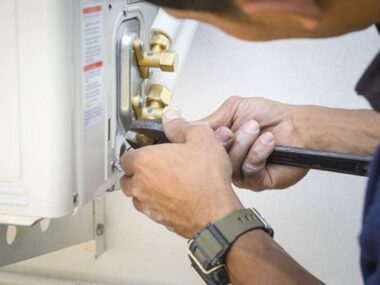After you have applied oil primer to your surface, you will need to wait for it to dry completely before proceeding with your paint job. Depending on the temperature and humidity levels in your work area, this could take anywhere from a few hours to a day or more. Once the primer is dry, you can then proceed with painting as usual. Keep in mind that oil-based paints can take longer to dry than water-based paints, so plan accordingly.
If you are unsure as to whether or not your primer is dry, you can always test it by applying a small amount of paint to the surface. If the paint goes on smoothly and evenly, then the primer is dry and you can proceed. If the paint does not go on evenly or if it seems to be taking longer than usual to dry, then you will need to wait a bit longer before proceeding. Oil-based primers are a great option for many different types of projects. They provide a nice smooth surface for painting and they also help to protect the surface from future damage. If you are planning on painting a surface that is going to be exposed to the elements, then an oil-based primer is definitely the way to go. Just be sure to allow plenty of time for it to dry completely before proceeding with your paint job.
What is oil primer and what are its benefits?
Oil primer is a type of paint that is used to prime surfaces before painting. It is made up of oil and resin, and it helps the paint adhere to the surface while also filling in any small holes or cracks. Oil primer can be used on a variety of surfaces, including wood, metal, and plastic. It provides a smooth surface for the paint to adhere to, which results in a longer-lasting finish. Additionally, oil primer can help prevent moisture damage and corrosion. If you are planning to paint a surface, be sure to use oil primer first!
Oil primer is a type of paint primer that is made with oil. It is designed to provide a smooth surface for painting and to help protect the surface from future damage. Oil-based primers are a great option for many different types of projects. They provide a nice smooth surface for painting and they also help to protect the surface from future damage. If you are planning on painting a surface that is going to be exposed to the elements, then an oil-based primer is definitely the way to go. Just be sure to allow plenty of time for it to dry completely before proceeding with your paint job.
Tips for speeding up the drying process
Oil primers are a great way to add an extra layer of protection to your paintjob, but they can take a long time to dry. If you’re in a hurry, here are some tips that can help speed up the drying process.
First, use a hairdryer or space heater: By blowing warm air over the surface, you can help speed up the drying process. Just be sure to keep the heaters at a safe distance so as not to damage the surface. Second, increase the ventilation: If possible, open up windows and doors to help improve air circulation. This will help the primer dry faster by allowing the moisture to escape. Third, wait for warmer weather: If it’s cold outside, the primer will take longer to dry. By waiting for warmer weather, you can help speed up the process. Fourth, use a fan: By using a fan to circulate the air, you can help the primer dry faster. Just be sure to keep the fan at a safe distance so as not to damage the surface. With these tips, you can help speed up the drying process and get on with your paint job!






